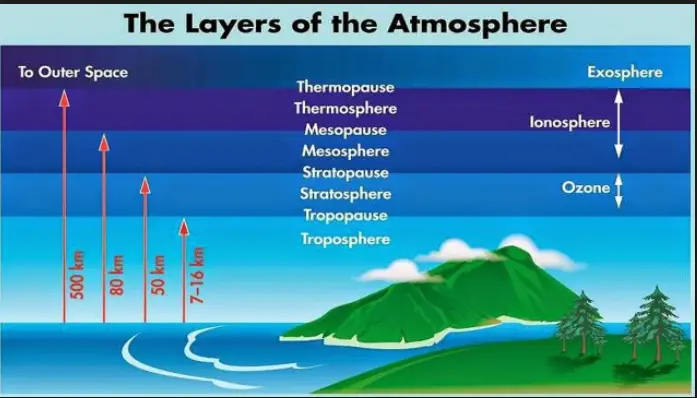INTRODUCTION
- The atmosphere consists of a number of gasses, the composition being called air. It surrounds the earth extending upwards for about 500 miles.
- Commencing from the earths surface there are a number of concentric layers of air, the first of these layers being known as the TROPOSPHERE which extends to a height of -approximately 11 kilometers (36, 000 ft) . This height varies being lower at the poles than at the equator. The boundary of the TROPOSPHERE is known as the TROPOPAUSE.
- At this point the temperature of the atmosphere becomes constant.
- Following the TROPOSPHERE is the lower STRATOSPHERE which extends to 20 kilometers (65,000 ft). In this layer the temperature is constant. The UPPER STRATOSPHERE then extends up into the IONOSPHERE and the EXOSPHERE.
- Through these layers the atmosphere under goes a gradual transition, from its characteristics at sea level to those at the fringes of the EXOSPHERE which merges with completely airless outer space.
- Air is a compressible fluid and as such is able to flow or change its shape when subjected to even minute pressures.
GASES OF THE ATMOSPHERE AND ITS PERCENTAGE
| GASEOUS PERCENTAGE | BY VOLUME |
| Nitrogen (Inactive) | 78.08 |
| Oxygen | 20.19 |
| Argon | 0.94 |
| Carbon Dioxide | 0.03 |
| Hydrogen | 0.03 |
| Neon | 0.0012 |
| Helium | 0.0001 |
The atmosphere is divided into 4 regions, namely:
TROPOSPHERE
a.Where temperature decrease from 15ºC to 60ºC.
b.Tropopause
STRATOSPHERE
a.temperature constant at – 60ºC.
b. Temperature increases from – 60ºC to 55ºC and then falling back to -100°C at the upper stratosphere.
IONOSPHERE
a.It extends from 40 miles to 120 mile. Temperature rises from – 100ºC to 1,200ºC.
EXOSPHERE
a.Above 120 miles and above.
b.Temperature approximately 1,800ºC.

